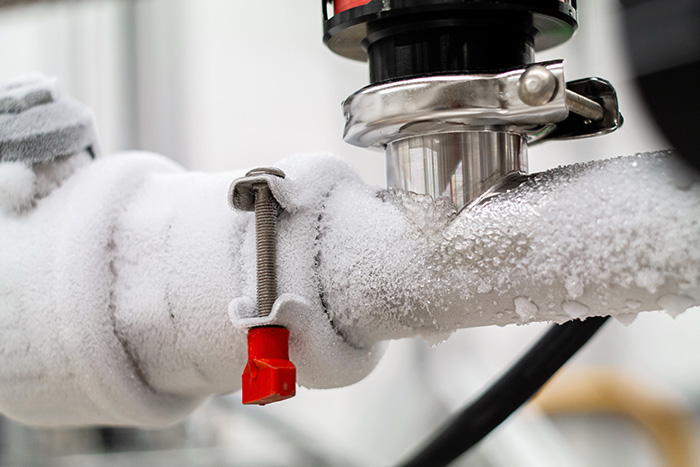Tips to Safeguard Your Plumbing from Freezing: Essential Strategies
Tips to Safeguard Your Plumbing from Freezing: Essential Strategies
Blog Article
Just how do you really feel when it comes to 6 Ways to Prevent Frozen Pipes?

Cold weather can damage your pipes, particularly by freezing pipes. Below's exactly how to stop it from taking place and what to do if it does.
Introduction
As temperatures decrease, the danger of frozen pipes boosts, potentially bring about pricey repair services and water damages. Recognizing just how to stop icy pipelines is critical for homeowners in cool environments.
Understanding Frozen Pipelines
What creates pipelines to freeze?
Pipes ice up when exposed to temperature levels below 32 ° F (0 ° C) for prolonged durations. As water inside the pipelines ices up, it broadens, taxing the pipeline walls and possibly creating them to burst.
Dangers and damages
Icy pipelines can result in water system disturbances, residential property damage, and costly repairs. Ruptured pipelines can flood homes and cause extensive structural damages.
Indicators of Frozen Piping
Identifying frozen pipes early can prevent them from bursting.
Exactly how to determine frozen pipes
Search for reduced water flow from faucets, unusual odors or noises from pipes, and noticeable frost on revealed pipelines.
Prevention Tips
Protecting prone pipes
Wrap pipelines in insulation sleeves or make use of warm tape to safeguard them from freezing temperatures. Focus on pipelines in unheated or outside areas of the home.
Home heating methods
Maintain indoor rooms adequately warmed, particularly areas with pipes. Open up cabinet doors to permit warm air to circulate around pipelines under sinks.
Protecting Exterior Plumbing
Yard hoses and outside faucets
Detach and drain pipes garden hoses before wintertime. Install frost-proof spigots or cover exterior faucets with insulated caps.
What to Do If Your Pipes Freeze
Immediate actions to take
If you think frozen pipelines, maintain faucets open to relieve pressure as the ice thaws. Use a hairdryer or towels taken in hot water to thaw pipes gradually.
Long-Term Solutions
Structural modifications
Consider rerouting pipes far from outside wall surfaces or unheated areas. Add additional insulation to attic rooms, cellars, and crawl spaces.
Upgrading insulation
Purchase high-grade insulation for pipelines, attic rooms, and wall surfaces. Correct insulation helps maintain constant temperature levels and decreases the danger of frozen pipes.
Final thought
Stopping icy pipes needs positive steps and quick reactions. By understanding the reasons, indications, and preventive measures, homeowners can shield their plumbing during winter.
5 Ways to Prevent Frozen Pipes
Drain Outdoor Faucets and Disconnect Hoses
First, close the shut-off valve that controls the flow of water in the pipe to your outdoor faucet. Then, head outside to disconnect and drain your hose and open the outdoor faucet to allow the water to completely drain out of the line. Turn off the faucet when done. Finally, head back to the shut-off valve and drain the remaining water inside the pipe into a bucket or container. Additionally, if you have a home irrigation system, you should consider hiring an expert to clear the system of water each year.
Insulate Pipes
One of the best and most cost-effective methods for preventing frozen water pipes is to wrap your pipes with insulation. This is especially important for areas in your home that aren’t exposed to heat, such as an attic. We suggest using foam sleeves, which can typically be found at your local hardware store.
Keep Heat Running at 65
Your pipes are located inside your walls, and the temperature there is much colder than the rest of the house. To prevent your pipes from freezing, The Insurance Information Institute suggests that you keep your home heated to at least 65 degrees, even when traveling. You may want to invest in smart devices that can keep an eye on the temperature in your home while you’re away.
Leave Water Dripping
Moving water — even a small trickle — can prevent ice from forming inside your pipes. When freezing temps are imminent, start a drip of water from all faucets that serve exposed pipes. Leaving a few faucets running will also help relieve pressure inside the pipes and help prevent a rupture if the water inside freezes.
Open Cupboard Doors
Warm your kitchen and bathroom pipes by opening cupboards and vanities. You should also leave your interior doors ajar to help warm air circulate evenly throughout your home.

I came across that page about Prevent Frozen Pipes while surfing around the internet. Are you aware of another person who is enthusiastic about Preventing and dealing with frozen pipes? Feel free to share it. Thanks for your time. Come back soon.
Visit Link Report this page